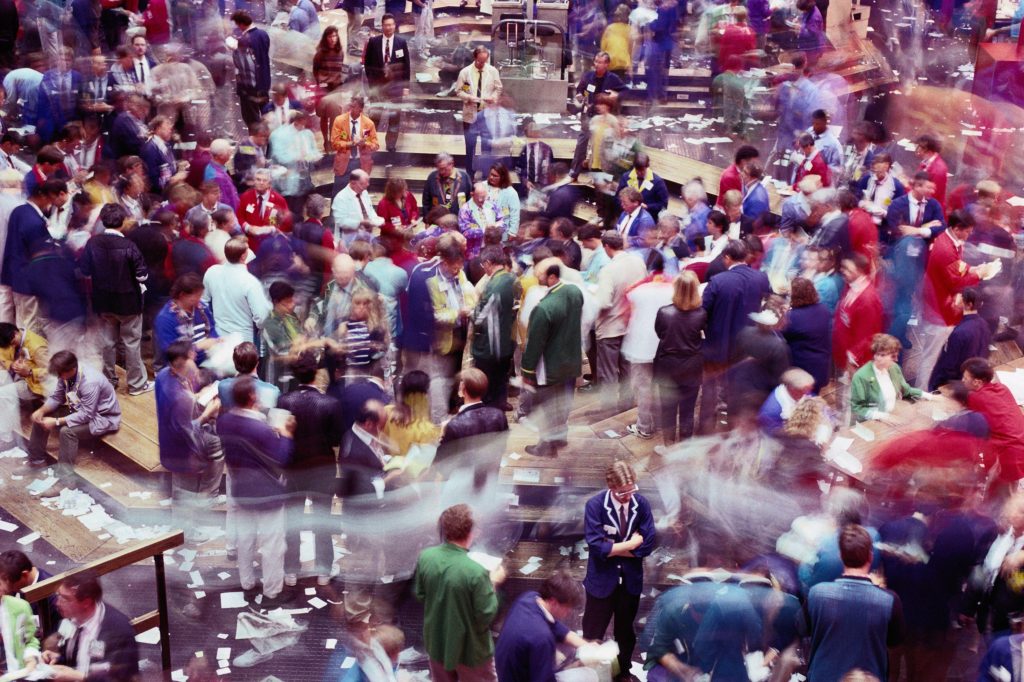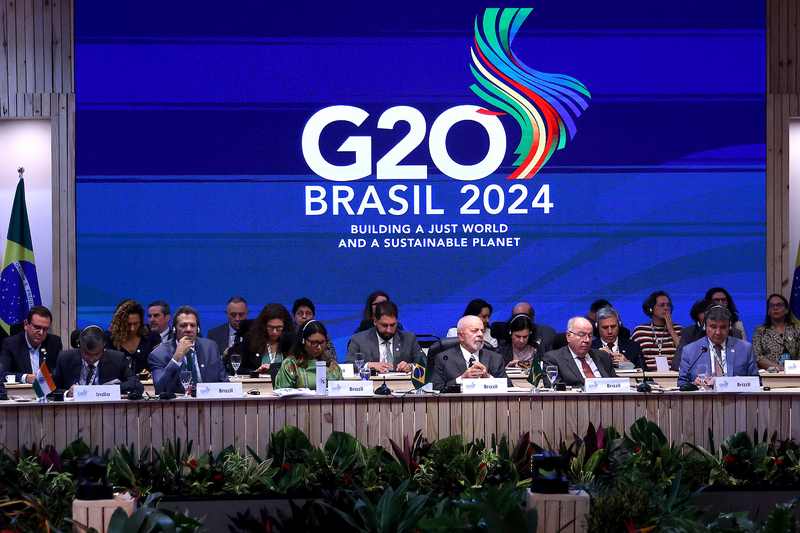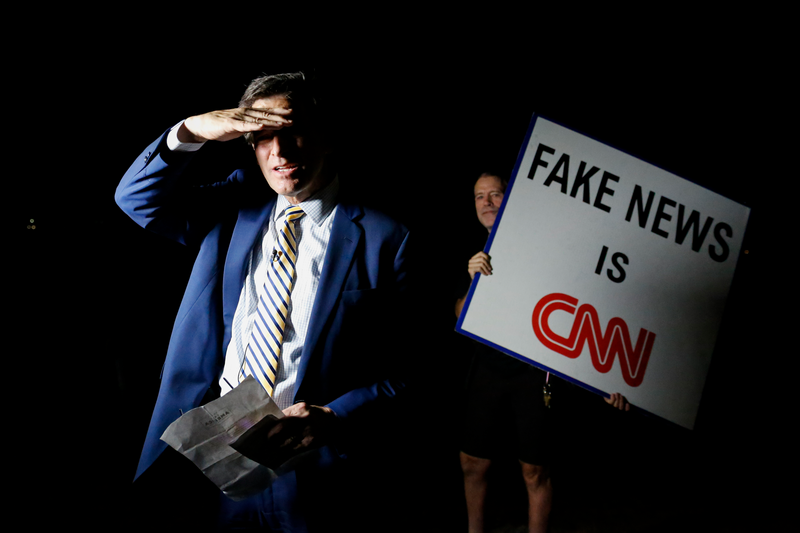25 January, 2024 by Tim Harford
Not long after Eric Hebborn was murdered, an off-the-record conversation with the famed artist-turned-forger was published. On tape, Hebborn made explosive claims about his time as a student at the Royal Academy of Art in the 1950s, where he had been awarded a prestigious prize. Though a gifted draughtsman, he was a surprising choice, because the art of the day was all about high concepts, not realistic depictions. Drawing was an unfashionable business, so how had a mere draughtsman won the prize?
Hebborn explained that, one day, a drunken porter at the Royal Academy was looking for a quiet spot to sleep in the basement and had fashioned a screen made of some of the pictures stored down there. One of those was the only surviving large drawing by Leonardo da Vinci, known as the Burlington House Cartoon, after the Royal Academy’s headquarters. Unfortunately, the porter stacked the Da Vinci against a leaking radiator. By the next morning, the picture had been thoroughly steamed. Only the faintest outline of the sketch remained.
In a panic, the porter summoned the president of the Royal Academy, who summoned the keeper of pictures, who summoned the chief restorer of the National Gallery, who announced that the picture couldn’t be restored, it could only be redrawn. At which point, they sent for star student Eric Hebborn, who wielded his chalk and charcoal in a flawless recreation of the lost original.
Or so Hebborn claimed, noting that it seemed curious that the Royal Academy sold the drawing soon afterwards, and spent some of the money on . . . upgrading its radiators. It was an astonishing story and very hard to check. The drawing was indeed sold to the National Gallery. But one day, in 1987, a man walked into the National Gallery wearing a long coat, paused in front of the drawing, pulled out a shotgun and blasted the artwork. The man, who wanted to make a statement about the social conditions in Britain, was arrested and later confined to an asylum. The National Gallery had the drawing restored, with tiny fragments of paper being painstakingly glued back together. That restoration would have concealed Hebborn’s handiwork, if Hebborn ever touched the cartoon. So — did he?
When the jaw-dropping story containing Hebborn’s claims was published, the Royal Academy responded that they were “astonished that anyone could fall for such an unlikely story from someone who made a living out of being a fake”.
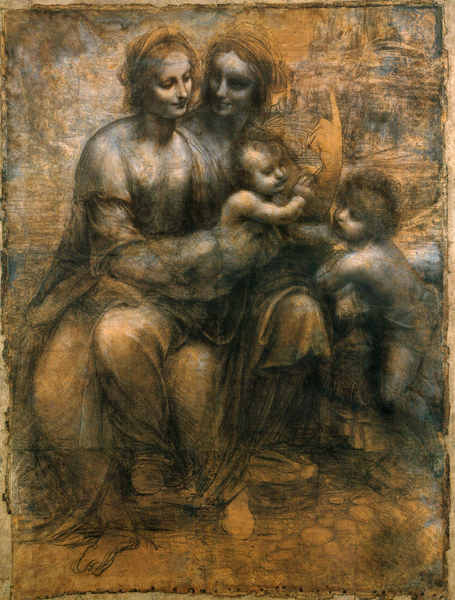
Photo: Fine Art Images/Heritage Images/Getty Images
One thing is true for sure, Hebborn made his living out of being a fake. After he graduated, he moved to Rome and worked as both an art dealer and what one might euphemistically call a picture restorer. He’d clean old pictures and retouch them and, before long, he was doing much more than that. Add a balloon, floating over an undistinguished landscape, and you had what appeared to be an important record of the early steps of aviation — and a much more expensive painting. Or maybe the fashion was for poppies. They were easily added and made to look as though they had been part of the original. Or, as Hebborn himself said, “a cat added to the foreground guaranteed the sale of the dullest landscape”. Soon enough, Hebborn was being asked to “restore” blank sheets of paper, or to “find” lost preparatory sketches by old masters. He would pass these discoveries to other dealers, some of whom knew what he was up to and others who did not. He claimed to have created more than a thousand forgeries. Some art historians think he made a lot more than that.
Here’s another hard-to-check Hebborn story. A few years after moving to Rome, he acquired a drawing of Roman ruins, supposedly sketched by the Flemish master Jan Brueghel the Elder sometime around the year 1600. It was good value, just £40 in 1963 (nearly £1,000 today). But was it really by Brueghel? The frame said so, with the imprimatur of a respected London dealer. It had Brueghel’s signature on it. The paper was old. Hebborn knew a lot about paper. As a dealer in old drawings, he had to. There were so many fakes around, after all.
But the drawing itself didn’t seem right to Hebborn. It was too careful, the lines drawn too slowly. “This is not a Brueghel,” Hebborn said to himself. “This is a copy.” He supposed that some forgotten engraver, three centuries or more ago, had painstakingly copied Brueghel’s original as the first step in making an engraving. The original itself had been lost. Hebborn decided to find it again, in a manner of speaking.
Hebborn turned over the frame and steamed off the stiff sheet of brown backing paper, setting it to one side. Then he teased out the rusty nails, setting those aside, too. Each one would eventually nestle back in precisely the right hole. Finally, he taped the old drawing to the side of his drawing board.
He prepared his materials: a blank page cut out of a 16th‑century book, carefully treated with a starch solution to control its absorbency; an 18th-century paintbox, many of the paints still perfectly good; a glass of brandy to steady the nerves. And, moving precisely but swiftly, he made his own “more vigorous” copy. Very nice. It looked more like a Brueghel now. He sold it on again, and it ended up in the Metropolitan Museum of Art in New York. Having admired his handiwork, Hebborn recalled, he did something that “I rather regret . . . I tore up the thing I copied . . . I flushed it down the lavatory. I rather wish I hadn’t because it would be nice now to compare, you know . . . perhaps I destroyed an original Brueghel. I hope not.”
In any case, Hebborn went on, the Metropolitan Museum seemed to be happy with his copy. Yet when he announced this forgery to the world in his 1991 autobiography, Drawn to Trouble, the Met was not happy. It told The New York Times, “We don’t believe it’s a forgery, and we believe that the story told by Mr. Hebborn in this book is not true.”
Which were the fakes: the yarn about the Da Vinci or the drawing? The Brueghel sketch or the story of its provenance? Deciding what’s true and what isn’t is something we’re quickly having to get used to doing. I’m not completely confident that we’re up to the challenge.
The journalist Samantha Cole introduced the world to a new technology with the following sentence: “There’s a video of Gal Gadot having sex with her stepbrother on the internet.” The video was, of course, a deepfake, swapping Gadot’s face on to a porn performer’s body, created using a particular form of artificial intelligence called deep learning.
This was 2017, the year after “post-truth” was named Word of the Year by Oxford Dictionaries and a fertile time for anxiety about people finding new ways to lie to us. What if someone created a deepfake of Donald Trump declaring war on China?
In the following years, such fears seemed overblown. A few deepfakes made a splash: one appearing to show Ukraine’s President Volodymyr Zelenskyy belly-dancing did the rounds earlier this month. In 2018, the Flemish Socialist party posted a fake video appearing to show Donald Trump declaring, “As you know I had the balls to withdraw from the Paris climate agreement. And so should you.” Then there was the audio deepfake released two days before the Slovakian election last September. This was widely shared online and seemed to portray the opposition leader conniving to rig the vote. Late polls had showed him ahead, but he lost the election to a pro-Russian rival.
Despite such warning shots, deepfake technology is still mostly used for non-consensual pornography. Part of the reason is that creating deepfakes is hard — there are easier ways to lie with video. You could, for example, misdescribe an existing video. In December 2023, videos circulated on social media claiming to show Hamas executing people by throwing them off the roof of a building in Gaza. The videos are genuine, but the atrocity took place in Iraq in 2015 and the murderers were Islamic State, not Hamas. It’s common for real videos and pictures to be shared online with deceptive labels.
Other simple tricks achieve much the same effect. Let’s say it’s the 2016 election and you want to create a joke video of Dwayne “The Rock” Johnson singing an abusive song to presidential candidate Hillary Clinton, and her reaction to it. No big deal, just for the laughs. It’s easy. We have footage of The Rock singing an abusive song about another wrestler. We have footage of Hillary Clinton looking a bit awkward. Splice them together — as one troll did — and you have a crude prank depicting a campaign-trail event that never happened. A shallowfake, if you like.
In his book about deepfakes, Trust No One, the journalist Michael Grothaus interviewed the troll in question, who realised something unsettling once his shallowfake video went viral on Facebook. The comments rolled in; people had missed the joke. “Wait,” the troll told Grothaus. “These dumb shits think this is real?”
They did indeed. They — we — are busy. We’re distracted. We instinctively feel that some stuff is too good to check. And so we’ll accept lies that really should give us pause. The Slovakian case should be a warning. With high-stakes elections taking place across the world this year, the experts I’ve spoken to are concerned that it’s only a matter of time before a clever, well-timed piece of disinformation has a calamitous impact, deciding the result of a close-run election. It might not involve a deepfake or another AI-generated visual image. Then again, it might. The technology is getting better; it is already straightforward to create a convincing deepfake, or to use generative AI to fabricate a photorealistic scene that never happened, barely more difficult than editing or redescribing an existing video. And visual images have always been more eye-catching and emotionally compelling than text. So have our fears about deepfakes really been misguided, or have they merely been premature?
Some AI experts have waved away concerns about deepfakes, reassuring us that we’ll get smarter once we get used to them. Professor Ira Kemelmacher-Shlizerman, a computer scientist at Google and the University of Washington, told the Radiolab podcast in 2019 that “if people know that such technology exists, they will be more sceptical”. She explained: “If people know that fake news exists, if they know that fake text exists, fake videos exist, fake photos exist, then everyone is more sceptical in what they read and see.”
But perhaps we’ve already taken scepticism too far. Consider a new analysis in the Journal of Experimental Psychology from the psychologists Ariana Modirrousta-Galian and Philip Higham. They look at games such as Bad News and Go Viral!, which are designed by researchers at the University of Cambridge to help “inoculate” people against fake news. And they work, sort of. After playing these games, experimental subjects are indeed more likely to flag fake news as fake news. Unfortunately, they are also more likely to flag genuine news stories as fake news. Their ability to discriminate between true and false does not improve. Instead, they become more cynical about everything.
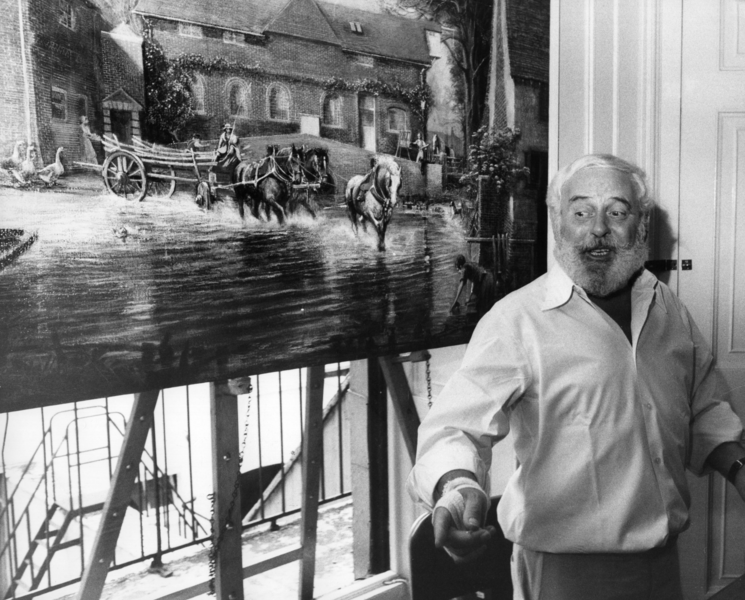
Photo: Keystone/Getty Images
What is the deeper problem, people falling for malicious nonsense, or people refusing to believe carefully reported journalism? I’m not sure. But it’s certainly possible that universal cynicism is a cure that’s worse than the disease. Deepfakes, like all fakes, raise the possibility that people will mistake a lie for the truth, but they also create space for us to mistake the truth for a lie.
Just think about the notorious tape from Access Hollywood, in which Donald Trump boasted of sexually assaulting women. It was released in October 2016 and caused a political explosion. Deepfake audio wasn’t part of the conversation then, but if it had been, Trump could easily just have said: “That’s not my voice on the tape.” The mere fact that deepfakes might exist creates a completely new kind of deniability.
A study by researchers at Purdue University examined the evidence for this sort of risk. They surveyed 15,000 Americans, asking them how plausible they would find a variety of excuses for political scandals. They found that when the scandal was reported as text, politicians could get themselves off the hook by shouting “fake news”. People would believe the scandal never happened, that the evidence itself was faked.
What is the deeper problem, people falling for malicious nonsense, or people refusing to believe carefully reported journalism?
When Purdue conducted their study, in 2020, that wasn’t yet true for video: if videotape existed of a politician doing or saying something awful, they couldn’t expect to exonerate themselves by protesting “that video is fake”. But I wonder how long video evidence will continue to be regarded as trustworthy and how soon politicians will be able to shrug off damning video evidence of misbehaviour by falsely claiming the video itself was phoney. Last year, in a lawsuit over the death of a man using Tesla’s self-driving capabilities, Elon Musk’s lawyers questioned a YouTube video in which Musk was talking about those capabilities. It might be a deepfake, they said. (The judge was unimpressed.)
If we’re shown enough faked videos of atrocities, or of political gaffes, we might start to dismiss real videos of atrocities and real videos of political gaffes, too. It’s good to be sceptical, but if we are too sceptical then even the most straightforward truths are up for debate.
That may explain why, five years after Samantha Cole explained deepfake pornography to her astonished readers, she was writing an article with the stupefying title “Is Joe Biden Dead, Replaced by 10 Different Deepfake Body Doubles? An Investigation”.
It might seem a long road from “that woman waving a sex toy around really isn’t Gal Gadot” to “that man giving a speech in the White House really is Joe Biden”. But it’s a road that Eric Hebborn would have understood very well. Maybe that Brueghel really is a Brueghel. Maybe the Da Vinci is just a Da Vinci.
If Hebborn was telling the truth about replacing that Brueghel with his own drawing, why did he do it? To amuse himself and burnish his reputation as a master draughtsman when he confessed. If he lied about it, why? Also to amuse himself and burnish his reputation as a master draughtsman. The writer and artist Jonathon Keats, in his book Forged, said of Hebborn, “faking his fakery may have been his master stroke, since no amount of sleuthing could detect forgeries that never existed”.
So which is the fake, the Met’s drawing by Jan Brueghel, or Eric Hebborn’s story about having faked it? Hebborn’s answer was, who cares? In his sensational autobiography, he argues that there’s no such thing as a fake work of art, just a mistaken attribution. “I don’t like the word fake applied to perfectly genuine drawings,” he explained in a BBC documentary, released the same year as his autobiography. Hebborn cheekily blamed unscrupulous dealers for misattributing his work and incompetent experts for missing the truth.
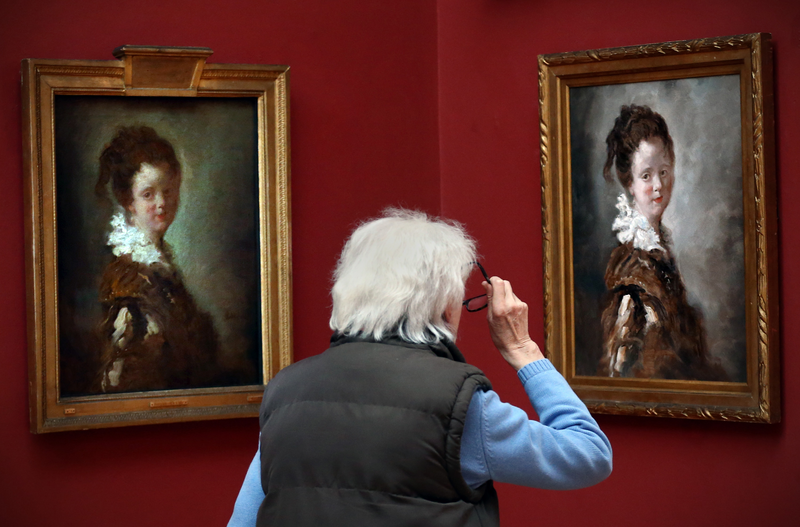
Photo: Carl Court/Getty Images
Maybe it was a real Brueghel that he flushed down the loo. Maybe it was a copy. Or maybe Hebborn made up the entire story to amuse himself by trolling the Met. Maybe the picture in the Met’s collection really was painted by Jan Brueghel the Elder, as originally thought, or Jan Brueghel the Younger, as later decided, or the current attribution, “Circle of Jan Brueghel”. It doesn’t matter, said Hebborn. It’s a beautiful drawing, whoever drew it. Enjoy it for what it is and don’t worry about what it isn’t. Art is about creating beautiful things, isn’t it? And that is what Hebborn did.
The BBC interviewer challenged him at one point. If he was just making beautiful drawings rather than fakes, why did he put the stamps of famous historical art collectors on the pictures? “Well they look nice, for one thing,” shrugged Hebborn.
But weren’t they designed to convince the experts that the pictures were genuine? “I don’t think so. If they were experts, they would have seen that they were false collectors’ marks,” Hebborn replied. “Some of them were done freehand, in watercolour, rather than being stamped. I did them in a very amateurish way. They shouldn’t have been fooled at all.” Or as a later faker said: “Wait, these dumb shits think this is real?”
In 2016, two analysts at the think-tank Rand Corporation described the evolving propaganda strategy of the Russian government. The conventional wisdom on propaganda messages is that they should be true when possible and, in any case, they should be believable and consistent. But the emerging approach from Russia was quite different. Russian media channels, websites and social media accounts for hire would post anything. It didn’t matter whether it was true. It didn’t matter whether it was believable. What mattered was speed, relevance and volume. The analysts called this strategy “the fire hose of falsehood”. It’s a nickname that would have suited Hebborn perfectly.
There are several reasons why the fire hose of falsehood can work, despite the fact that the individual lies are not especially plausible. Fast, relevant spin from lots of different sources, all pushing the same basic perspective, can create an overall impression that feels quite believable. And the fire hose of falsehood can also deliver results even if nobody believes a word of it. When it works, it floods social media (and sometimes the conventional media too) with distractions, toxicity, shitposting and obvious nonsense. The result may well be to turn news consumers off completely. Why would you waste effort trying to understand the world when everyone seems to be lying about it all the time?
In a press conference late in 2023, Vladimir Putin fielded a videocall from a deepfaked copy of himself. “Do you have a lot of doubles?” the software doppelgänger asked. Real Putin calmly replied that only one person could speak with the voice of Putin, Putin himself. Under the circumstances, that was absurd. So why arrange such a stunt? To create a moment of levity in a country at war, perhaps. But there’s also a subtext: you can’t believe your eyes; you can’t believe your ears; you can’t believe anything.
This isn’t an entirely new idea. In his 2023 book A History of Fake Things on The Internet, Walter J Scheirer points out that many manipulated photographs are supposed to look manipulated. After Mao Zedong died in 1976, a photograph was taken of a memorial event with a line of Chinese leaders, heads bowed in respect. The official photograph of the event, however, contains obvious gaps. Mao’s close acolytes, known as The Gang of Four, were expunged. You’re supposed to notice. You’re supposed to understand that history, truth and the evidence of your own eyes — that none of these things is solid any more.
Beneath the smile and the winking stories he tells to the BBC producer, Hebborn seems vulnerable on camera. He speaks softly, slurring his esses. Maybe he’s had a bit too much to drink. He certainly drank excessively; his friends worried about that. And all his tricks and adventures start to seem less fun as Hebborn quietly tells the story of his life. That his overworked, stressed mother used to take her “revenge” out on him.
At school, he would make charcoal for drawing out of matches and was accused of arson by the headmaster, who caned him. So the eight-year-old Eric decided he’d do the deed for which he’d been punished and set fire to the school. “I got rather frightened and I thought I’d better tell the headmaster,” Hebborn said. But in his panic he couldn’t find the right words. He was sent to a youth detention centre at the age of eight.
It’s hard not to feel sympathy for the old rogue. And there is something very Hebborn-esque about being punished first, then committing the crime after the fact. Justice turned upside down. Truth turned back to front. History turned inside out. That’s Eric Hebborn and, perhaps, that’s the computer-generated world that is coming for us.
What does that world hold in store? As the UK, US and many other democracies go to the polls in 2024, it is worth pondering some of the more uncomfortable scenarios. Disinformation is now cheaper than ever. We might see authentic-seeming fake audio and video, generated automatically and at enormous scale. It might be targeted precisely at each person based on their web-browsing habits, rather than published where everyone can see and check. We might see emotionally compelling, individualised propaganda distributed so widely that no fact-checker could possibly debunk it. We have already seen the campaigns of established politicians, such as the former Republican US presidential candidate Ron DeSantis, use deepfaked attack ads.
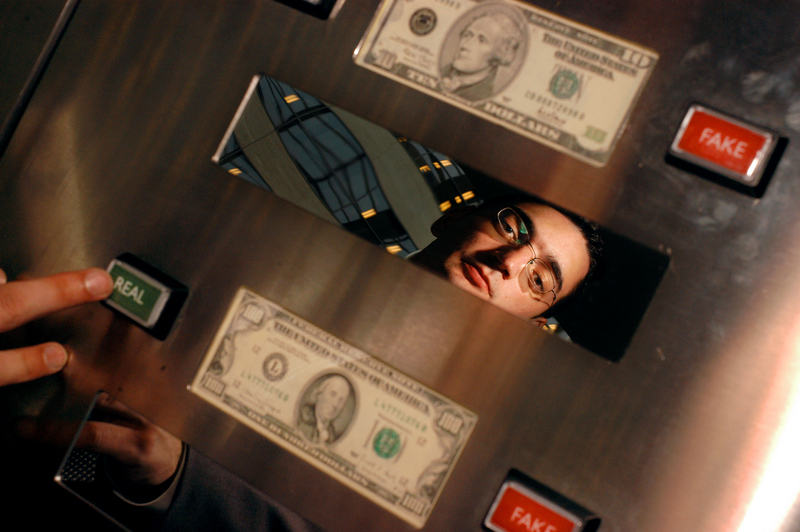
Photo: William Thomas Cain/Getty Images
And whether or not any of the faked material sticks, we can certainly expect real audio, real video and real reporting to be routinely dismissed as fake, if it even gets a look-in amid the fire hose of falsehood. The technology is coming fast and there are plenty of unscrupulous actors prepared to use it.
In 1995, Eric Hebborn followed up his autobiography with a book in Italian, a scandalous how-to guide later titled The Art Forger’s Handbook in English. A few weeks later, he was found lying in the street near his apartment in Rome. The medics thought at first that he had drunk too much, fallen and hit his head. But not for the first time in Hebborn’s life, the professionals were confused by what they were looking at. His condition was more serious, and less of an accident, than they realised.
Hebborn died on January 11 1996, a couple of days after being taken into hospital. Soon, hints of what had really happened started to emerge. The autopsy concluded that Hebborn had been killed not by a drunken fall, but by a hammer blow to the skull. His apartment had been ransacked while he was lying in the street. There was no shortage of suspects for the murder. There were people to whom he sold fakes, people whose real work he claimed he’d faked, dealers he publicly accused of knowingly buying fakes and selling them at a huge mark-up. More recent reporting suggests that the mafia were paying him to fake art, too. The police didn’t bother to investigate. Where would they even begin? Hebborn had far too many people who would have been happy to see him dead.
In Forged, Jonathon Keats invites us to think of Hebborn less as a faker and more as a man who created the work that the old masters were no longer available to make. It’s a heart-warming idea and one that would have pleased Hebborn: that we can create old works of art anew, and art history can expand like an accordion to accommodate them.
But although some might indulge that idea for artworks, I don’t feel comfortable in a world in which we can create alternative facts and squeeze them in next to the real ones; in a world where there’s a photograph of Mao’s memorial with the Gang of Four present and the same photograph with them absent; in a world where Vladimir Putin has conversations with himself and where people aren’t sure if that’s Joe Biden or 10 deepfakes of him.
And even in the world of art, should we welcome all those Hebborns? I fear that we lose more than we gain when we start to lose confidence in the Da Vincis and the Brueghels.
After Hebborn claimed to have created a better Brueghel and flushed the old version down the toilet, his former boyfriend and business partner published his own memoirs saying that the story about the Brueghel drawing wasn’t true. The story about setting fire to his school has been disputed, too. Once there are enough lies around, it’s easy to start doubting . . . well, everything.
Hebborn once told the great art journalist Geraldine Norman, “I like to spread a little confusion”. He succeeded. And he became so notorious that people are now starting to value the Hebborn forgeries in their own right. The only trouble is, wrote one art dealer, “some of the drawings which were being offered for sale by [Hebborn’s] associates and former friends had a strange feel to them, an unusually lifeless quality which did not seem true of Eric’s work at all. I had misgivings about the drawings and declined to purchase them.”
Genuine fakes? Fakes of fakes? Maybe they weren’t fakes at all, just original old masters having an off day.
Two years after Hebborn was murdered, an anonymous phone call to the Courtauld Institute in London warned that 11 named artworks in the institute’s collection were fakes by Hebborn. We still don’t know who made the phone call, or why.
I recently visited the Courtauld to look at some of the fakes, the wrongly suspected fakes, and the works suspended in limbo. It was a fascinating but unsettling experience. There are several pictures in the Courtauld’s collection that they are fairly sure were by Hebborn; some of which he confessed to himself, not that that was ever a guarantee of anything.
There’s a Van Dyck that is under suspicion, but there’s nothing provably wrong with the picture. Other pictures that were anonymously accused of being Hebborn fakes definitely aren’t. There’s a Guardi sketch that was photographed in the 1920s, before Hebborn was born (or did he copy it and flush the original down the loo?) A Tiepolo drawing is now regarded as genuine. Whoever that anonymous whistleblower was, and whatever their reasons, they weren’t infallible. And then there’s a Michelangelo drawing. Fake? Real? We just don’t know. It’s a beautiful work by — perhaps — one of the greatest artists who ever lived. And yet it seems doomed to have an asterisk beside it for ever.
I left the Courtauld Institute, and strolled towards the National Gallery, just down the road, where I could see Leonardo da Vinci’s masterpiece, the Burlington House Cartoon. This is the work that Hebborn claimed he’d redrawn, after a drunk porter left it too close to a radiator, the work that was later blasted with a shotgun.
I couldn’t help wondering: if that piece really is a Da Vinci, then who damaged it more, the man with the shotgun or Eric Hebborn and his story?
© The Financial Times Limited 2024. All Rights Reserved.
FT and Financial Times are trademarks of the Financial Times
Ltd. Not to be redistributed, copied or modified in any way.


